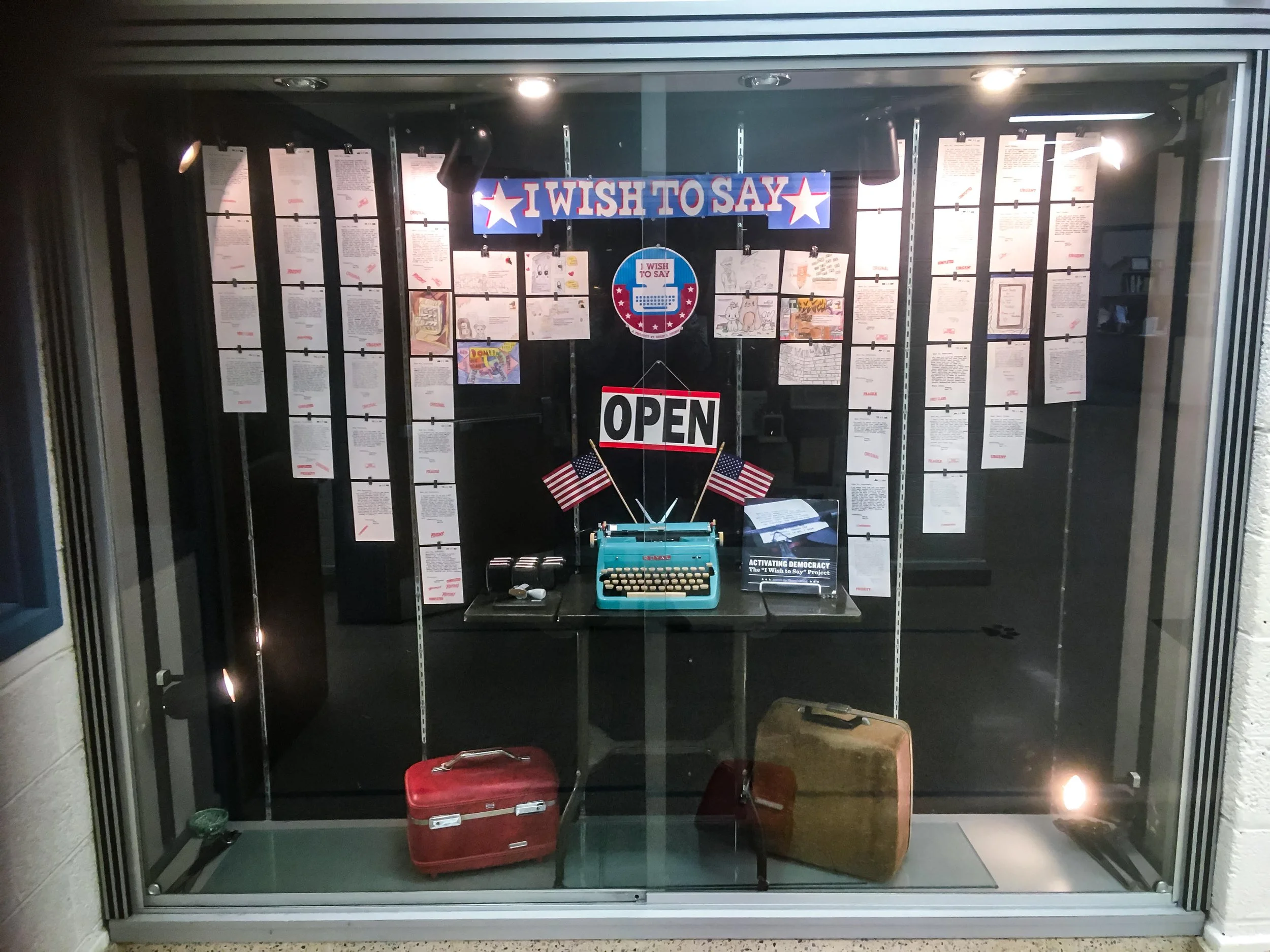Bringing Civic Engagement to Your Classroom…
The value of bringing I Wish to Say into schools lies in its ability to engage students in civic dialogue and creative expression in a unique, hands-on way. Integrating civic engagement into the classroom is essential in nurturing informed and active citizens. The "I Wish to Say" project presents a unique opportunity to engage students in meaningful discussions about their beliefs, viewpoints, and personal convictions related to current political topics that are grounded in their personal experiences, and aspirations. Through the experience of dictating postcards to the president, students are empowered to articulate their thoughts, concerns, and hopes for the future, fostering a personal connection to democracy and the power of free speech. By bringing this curriculum into your classroom, you can foster critical thinking, empathy, and communication skills among your students while encouraging young people to reflect on their roles as active citizens. Additionally, by working with a typewriter—a tool that predates their digital lives—students gain an appreciation for history and the tactile nature of written communication, reinforcing the idea that each word and thought has weight. I Wish to Say offers students a memorable, impactful experience that emphasizes the importance of individual voices in shaping society.
“The I Wish to Say project offers a rare and unique opportunity for students to experience the way art can exist in the non-traditional sense and that it can be this conduit for change. For students to learn experientially that there is an ability to form a direct line to the White House from the postcards that they formulate they begin to connect and realize where they come from doesn’t necessarily determine where they are going but rather it’s what they want to do with it. Through this project, they begin to see that they have a voice to change the things that impact their daily lives. You start reaching students in that way and they start looking at art in a different way, it becomes that aha moment. If your students feel empowered to change things or have the opportunity to change the things about their lives that make their life difficult or that they're not happy with, then what could their maximum potential be if you were to tap into this? Imagine the possibilities.”
- Robert S. Rose -
Educator & Director of Curriculum
-
Encouraging students to articulate their thoughts and perspectives helps develop their analytical skills, prompting them to consider various viewpoints on civic issues.
-
The curriculum emphasizes understanding and sharing experiences, allowing students to connect with the thoughts and feelings of their peers and the broader community while formulating their viewpoints in respectful and constructive lenses.
-
By participating in activities that invite students to express what they wish to say, they learn the importance of voice and advocacy, equipping them to take informed action on issues of concern that impact their daily lives and future.
Curriculum Objectives
-
Foster open dialogues about civic topics that resonate with students. Utilizing the prompt from the "I Wish to Say" project guides students through the process of formulating their opinions on various political topics in a concise, respectful, and well-informed practice. This culminates around creating a classroom ethos that takes into consideration and validates the thoughts of one another.
-
Encourage students to express their ideas constructively through various media, such as art, writing, and public speaking. This diverse approach accommodates different learning styles and preferences while offering cross-curricular connections in civics, visual and performing arts, creative writing and English language arts.
-
Partner with local organizations to create opportunities for students to engage with civic issues beyond the classroom, allowing them to implement their learning in real-world contexts. This could look like either a public display of student postcards from the project or students creating a typing pool performance for their peers to participate at an event.
Implementation Strategies
Assessment and Reflection
-
Assess student engagement and understanding through reflective activities, such as journals or group discussions. This allows you to gauge how the curriculum has impacted their perspective on civic issues and their role in the community.
-
By incorporating the "I Wish to Say..." project into your educational framework, you are empowering students to take an active role in civic life, fostering a culture of engagement and responsibility that extends beyond the classroom.
Student Postcard Archives
Additional Resources
Click Below to Find Out More!
Professional Development
&
Workshop Offerings
Official I Wish to Say Curriculum
Teachers interested in incorporating I Wish to Say into their classroom may contact Sheryl for more information below:
In the Classroom
Elana Anderson
New York, NY
Dean of Community Engagement & Social Justice at The Abraham Joshua Heschel School
Elana incorporated the I Wish to Say project into her school's curriculum during the 2020 school year.
Robert Rose
Art teacher at RJ Reynolds High School
Winston-Salem, NC
Robert first worked with Sheryl Oring in 2016 as a project assistant during a large-scale version of I Wish to Say in New York City. As an art teacher in North Carolina, Robert has incorporated Sheryl's project into his classroom curriculum with both middle school and high school students.
“The kids approached this as a truly honest open forum that let them speak as who they are in a really genuine way just like they did in Sheryl Oring’s official project,” ”







